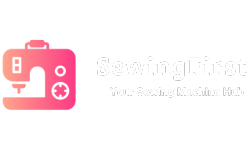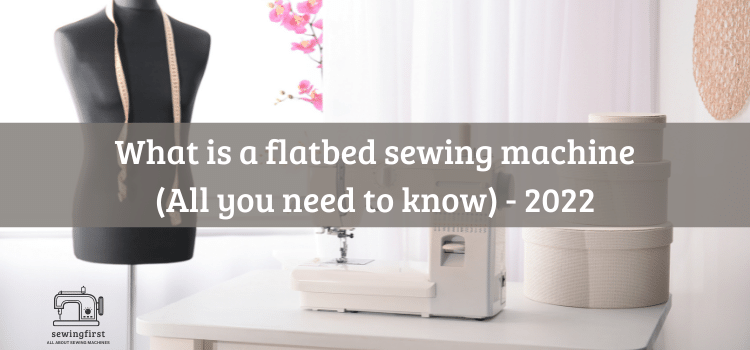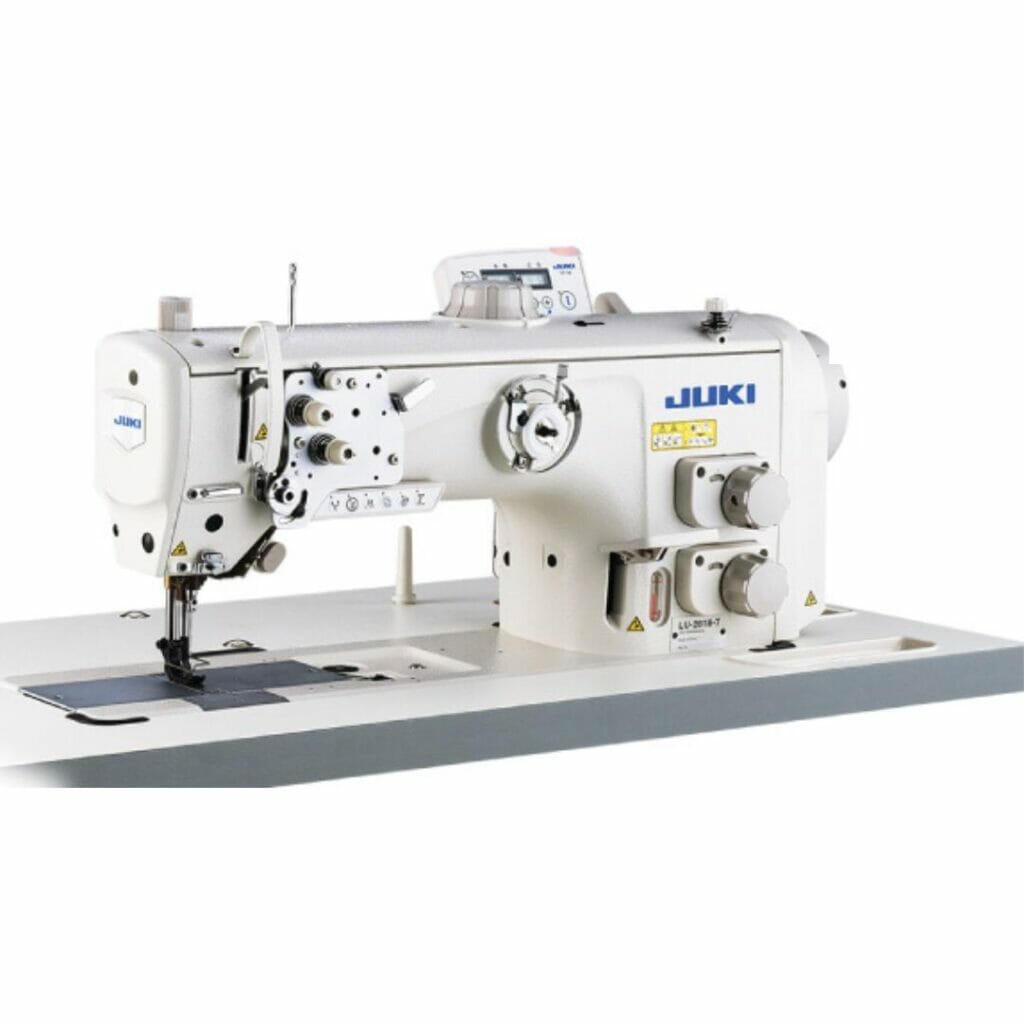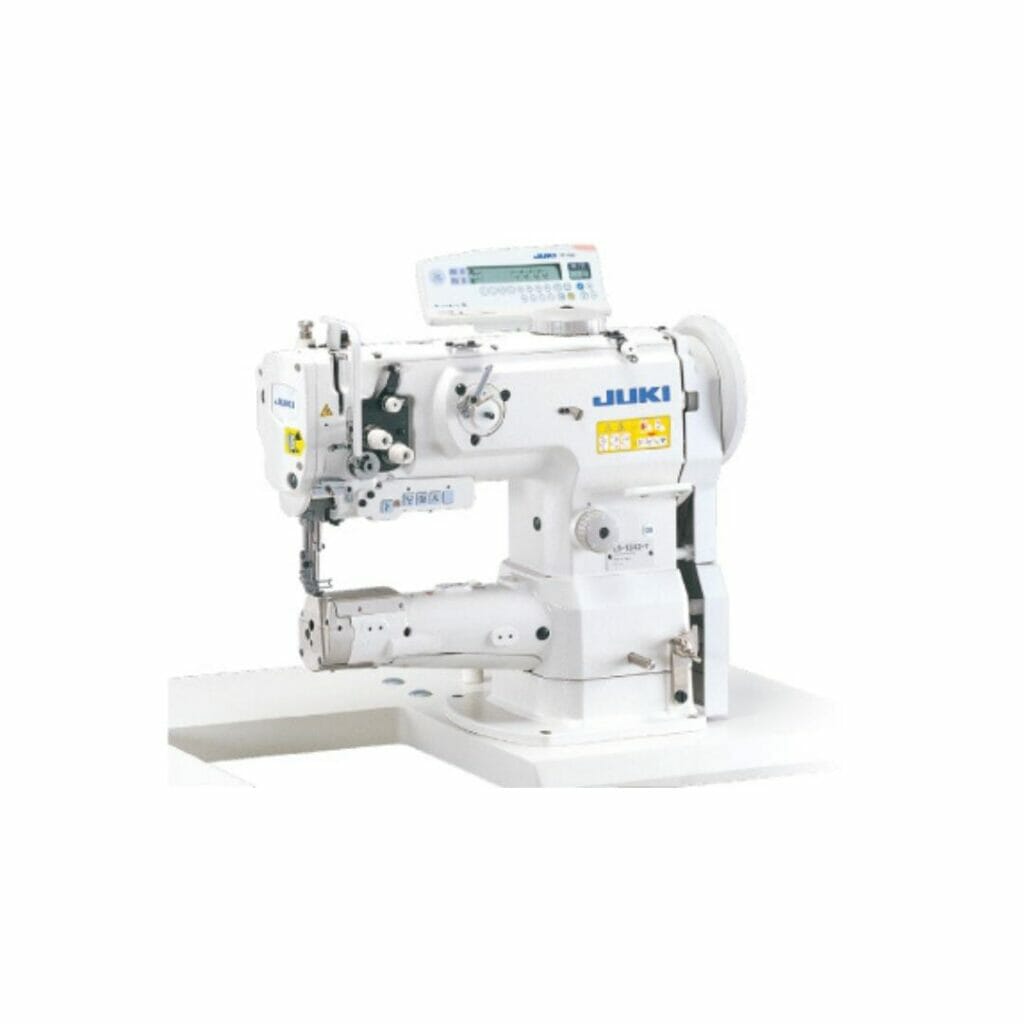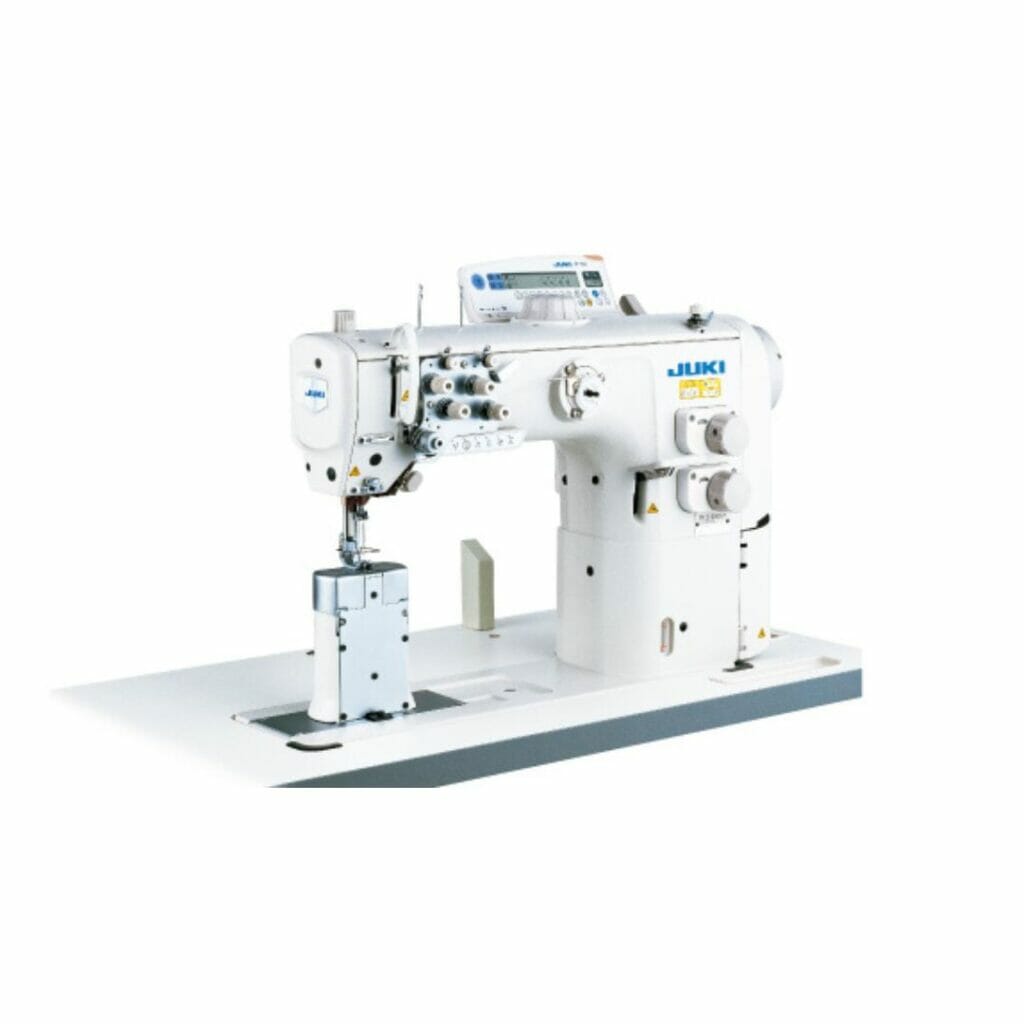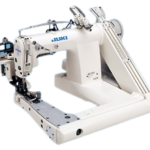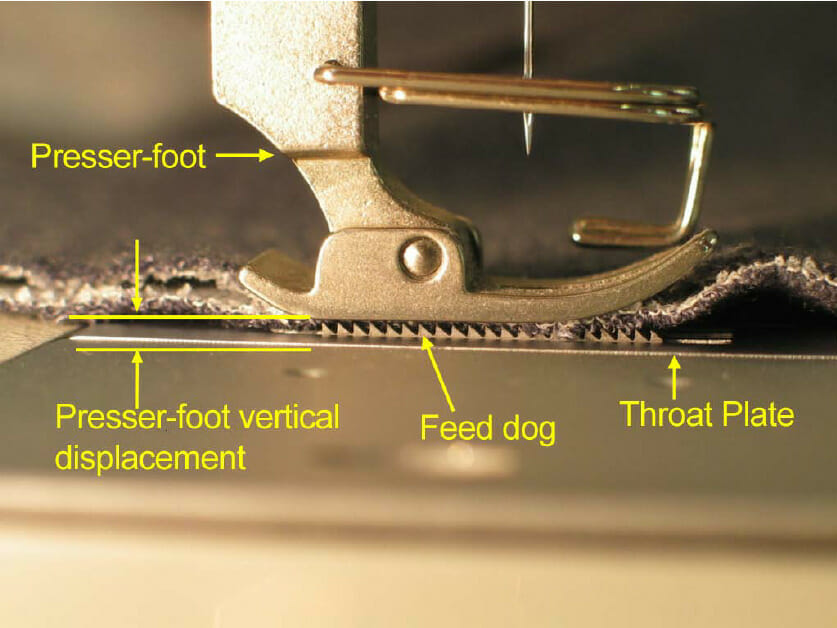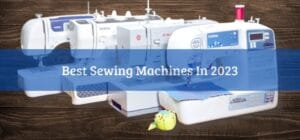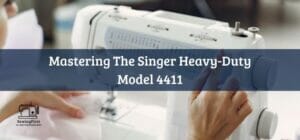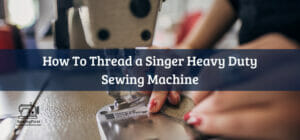A flatbed sewing machine is an industrial sewing machine used to make garments. They are beneficial for working with fabric that needs to be laid flat on the machine. This includes many kinds of apparel such as dresses, shirts, pants, coats, and jackets.
Flatbed sewing machines are versatile, allowing you to create items ranging from clothing to home decor. They also allow you to manipulate cloth with ease, creating unique patterns and shapes.
Related Topic: What is a Free Arm on a Sewing Machine? Learn The Difference Now!
Table of Contents
ToggleTypes of Industrial Sewing Machines
In terms of industrial sewing machines, the bed design is the primary factor that distinguishes them. These four different sewing machine bed styles and their uses are as follows:
Flat Bed:
These machines look like traditional hand-sewn clothing, except instead of having an upright stitch, they have a horizontal surface where the material passes through. Workers typically use them to stitch flat pieces of cloth together.
Cylinder Bed:
These feature a narrow, cylindric-like base that enables fabrics to move around and underneath the machine. They’re used for making things like sleeves, capes, etc.
They’re also useful for bulky and curvy things like saddle pads, shoes, etc.
Post Bed:
These machines include a bobbin, a feeding mechanism, and/or a looper in a vertical column above their flat bases.
The height of the pillar varies according to the type of machine and its application.
For example, applications that make accessing the sewing area difficult, like adding an emblem or boot or glove maker, use a post bed machine.
Off-the-Arm:
Besides sewing sleeves and shoulders, these machines are useful for sewing tubular goods, like the inseams of trousers.
There are lots of types of machines for making clothes. Some are portable, some are not, some are electric powered and some are batteries.
Some of these machines are designed just for stitching and most of them are meant for use by people who need to sew their own clothing. But even if you don’t know how to use one of these machines, they’re good for anyone who wants to learn.
Sewing Machine Feeds
There are several different types of industrial sewing machine feeding methods. Most commonly, you’ll find drop-feeding, where the fabric falls from above the machine.
There are many variations of drop feed, including push feed, pull feed, and even vacuum feed. These methods require more space under the machine, making it harder to fit multiple machines.
Another method is to use toothed segments called feed dogs, which raise and lower the fabric. They’re usually found above the sewing surface, and work like a conveyor belt.
Some models include a separate motor and gearbox for each dog, while others simply move the entire segment up and down. Many models come with a combination of both.
The third method is friction feeding, where the material slides along rails underneath the machine. It requires less room than the previous methods, but it isn’t always easy to set up.
Friction feeds are typically used for materials that aren’t very stiff, such as leather or suede.
What is a Flatbed Sewing Machine? And How To Use It
A flatbed sewing machine is a great tool for the home sewist. It’s compact, easy to use, and can be used in many different ways.
If you are new to using a flatbed sewing machine or have never used one before, it may seem like an intimidating piece of equipment at first glance. However, once you get the hang of it, you will wonder how you ever made anything without it!
The most basic way to use a flatbed sewing machine is by placing the material onto the bed and pressing down on the foot pedal. You can then start stitching.
There are several other ways to work with a flatbed sewing machine. For example, you could stitch along a patterned design, cut out pieces of fabric, or even do embroidery.
Types of Flatbed sewing machine stitches
The following is a list of the most common types of flatbed sewing machine stitches. It includes both hand and power-driven machines, as well as some special-purpose models. The list does not include all possible stitch patterns that can be used on a flatbed machine; it only lists those commonly found in home sewing machines.
Chain stitch
A chain stitch (also known as a zigzag) is a straight line of stitching that runs parallel to the edge of the fabric. It’s often used for decorative purposes, such as outlining a seam or adding texture.
Straight stitch
A straight stitch is a simple line of stitching that goes across the fabric. It’s useful for attaching buttons, snaps, and other fasteners.
Zigzag stitch
A zigzag stitch is similar to a chain stitch, except it has a curved shape. This makes it perfect for sewing curves, such as around corners or when sewing through thick fabrics.
Things You Should Know When Working With Flatbed Sewing Machine
When working with a flatbed sewing machine, there are two main things to keep in mind:
- stitch length
- needle position
Stitch Length
The stitch length refers to the distance between the needle and the presser foot. Most modern machines have three settings: short, normal, and long.
Short means the needle moves closer to the presser foot, resulting in shorter stitches. Long means the needle moves further away from the presser foot, creating longer stitches. Normal is somewhere in the middle.
When choosing your stitch length, consider what kind of fabric you are working with. Fabrics with a lot of stretches tend to require a shorter stitch length because they don’t want to pull apart too much during the stitching process.
On the other hand, if you’re working with a dense fabric, you might need to choose a longer stitch length so that the needle doesn’t hit the fabric too hard.
Needle Position
The second thing to remember is the needle position. There are two options here: left-hand threading and right-hand threading.
Left-hand threading is the standard setting for most flatbed sewing machines. Right-hand threading is more popular among quilters and people who prefer to work with heavier fabrics.
Flatbed Embroidery Machines
The term “flatbed embroidery machine” refers to a type of sewing machine used for embroidery work. Flatbed embroidery machines are often used for small projects such as clothing, bags, pillows, etc.
Because they’re easy to use and don’t require much space. They also allow you to easily change designs and colors.
A flatbed embroidery machine consists of four main parts:
- bed
- needle/thread guide
- throat plate
- frame.
When you start up the machine, you place the fabric onto the bed and attach the thread to the needle. You then move the machine forward and backward along the length of the fabric, creating stitches.
Depending on what kind of design you want to make, you might need to adjust some settings on the machine.
For instance, if you wanted to do a simple straight stitch, you wouldn’t need to adjust anything. If you wanted to do a satin stitch, however, you’d need to set the feed dogs to pull the fabric down toward the machine.
You could also buy an embroidery hoop to hold the fabric while you’re stitching. This allows you to keep the fabric taut as you move the machine across it, making sure that the stitches are evenly spaced throughout the piece.
When Buying A Flatbed Sewing Machine, Look For These Features:
Size
First off, you should know that a flatbed sewing machine doesn’t come in just any size. It has to fit into the specific frame you purchased.
You’ll also need to make sure that the machine’s width matches the width of the frame. The height of the machine depends on the design of the frame. Most flatbeds range between 18″ – 24″.
We’ve listed some important things to consider when looking for the best flatbed sewing machine for your needs.
Build Quality – Ensure that your flatbed sewing machine has a decent build quality with more metal than plastic parts, it should also have a long warranty for buyer’s confidence.
Speed Control – Your flatbed sewing machine should have an adjustable speed control so you can adjust the speed according to the thickness of the material being sewn.
Stitch Length Dial – Make sure that your flatbed sewing has a stitch length dial so you can easily change the stitch length without having to remove the presser foot.
Tension Control Knob – Make sure that your machine comes with a tension control knob. This is the most important part of your sewing machine and it’s very easy to get confused about how to use it.
Thread Cutter – A thread cutter is an essential tool for any seamstress. It will help you cut threads easily, quickly, and accurately. You can also use this to remove stitches from fabric if needed.
How To Select Flatbed Sewing Machines?
There are many different types of sewing machines out there, each one suited to different purposes. If you want to sew clothing, home decor items, bags, shoes, etc., you need to know what type of sewing machine you need.
This guide will help you choose the best flatbed sewing machine for your needs.
The most basic flatbed sewing machines are those used for making clothing. These usually use drop feed mechanisms and come with either a single or double needle.
Some models allow you to stitch multiple fabrics together, while others do not. For example, you could make a pair of pants using both a denim fabric and a cotton fabric.
If you plan on sewing home decor items, you might want to look into a walk-behind sewing machine. They are great for creating small projects like pillows, curtains, duvets, etc.
However, they are not suitable for larger projects because they cannot handle large pieces of material. Walk-behind sewing machines typically have a lower price tag than stand-up sewing machines.
Flatbed sewing machines designed specifically for sewing car seat covers are ideal for smaller jobs. They can easily fit under a table and provide easy access to materials.
In addition, they can be used to attach straps to the cover. Most models include an automatic thread cutter and can even be programmed to cut the threads automatically.
For sewing heavy-duty applications, you need a sewing machine with a heavier frame and a bigger motor. Stand-up sewing machines are generally better for these tasks because they can hold up to much larger amounts of weight. They are also easier to transport and store due to their size.
Conclusion
So now that you know What Flatbed sewing machines are, you can utilize this informative guide to take more benefits from flatbed sewing machines.
Thanks to their wide work area which gives you more space for working and sewing with flat fabric. They are perfect for sewing thick materials like denim jeans, leather jackets, etc.
The most important thing to remember about flatbed sewing machines is that they are meant for sewing flat fabrics. So, don’t try to use one for anything else.
FAQs
What is the best size for a flatbed sewing machine?
The flatbed sewing machine comes in various sizes, you have to decide according to your available space. Most flatbed sizes come in the range of 18″ to 24″.
What is the best flatbed sewing machine brand?
Juki and Singer are the best flatbed sewing machine brands. They have very modern and unique models which come with computerized systems.
